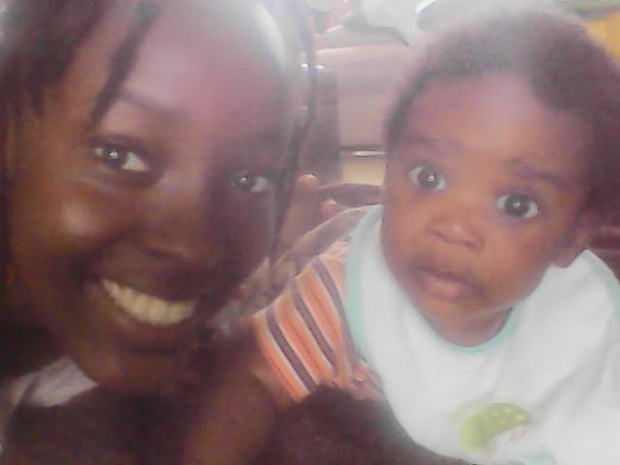I have just finished watching this video of tilapia skin being used in Brazil as a temporary graft for burns, and it reminded me of a patient I had in late 2015.
She was a little girl, then aged five, from a refugee family that had been resettled in the U.S. just a few weeks before the accident that landed her in a paediatric burn hospital accompanied by her father. Given the nomadic life that this family had lead, they spoke multiple languages — but only the father spoke Swahili. As a result, interpreting for the girl became like a game of telephone: the provider would say/ask something, I would translate into Swahili for the father, who would then translate into his mother tongue for his daughter. And vice-versa. Adding the layer of complexity arising from the family’s unfamiliarity with this their new host country, the fact that some expressions don’t easily translate from either language, and the cultural differences in adult-child interactions, those three weeks were a Herculean task. And this was not the first time I’d had to navigate such a situation.

- This is me with one of my nephews as an infant; published with permission from his parents. 🙂
Paediatric patients are generally challenging for me as an interpreter, because stranger anxiety often renders the child unwilling to respond to me directly and so I have to rely on the accompanying adult. Much stands to be lost in this three-way channel of communication, and so these cases call for careful diction and heightened attentiveness to visual cues. But how exactly does one explain to a parent, one who is so new to this country that he assumes every black person he sees must also speak his language, that the surgeon wants to place a porcine skin graft on his daughter? (Xenografts, such as the fish skin I mentioned earlier, are used as a temporary covering to encourage severely damaged skin to heal itself faster that it would unaided; they dry up and fall off once the skin beneath has sufficiently regenerated. The porcine graft in this case did not look like slice of pork belly but rather was presented in a form resembling a gauze mesh. There are other types of skin grafts which you can look up for yourself if you’re curious! Proceed with caution should you decide to view images.)
I found ways around this interpreting obstacle, and others that I may share in future posts, and the little girl recovered enough to go home. When she returned for follow-up a few weeks later, it was almost as though she had never been burnt. I still marvel to this day. Kids are a joy to work with — refreshing in their outlook, and resilient on account of the youth of their bodies and their minds not yet being able to fully comprehend the gravity of certain medical situations. I think my next post will be about the aforementioned cultural differences, and I’ll also share some expressions I’ve encountered that simply don’t translate cleanly! 😀
-Sylvia
***
Nimetoka kuangalia hii filamu fupi inayohusu ngozi ya samaki sato kutumika nchini Brazil kama ngozi bandia kwa walioungua, ikanikumbusha mgonjwa mmoja niliyekuwa naye mwishoni mwa mwaka 2015.
Alikuwa msichana mdogo mwenye umri wa miaka mitano, kutoka kwenye familia ya wakimbizi waliokuwa ndio wametua Marekani wiki chache kabla mtoto hajaungua. Alifikishwa kwenye hospitali maalum kwa watoto walioungua, akisindikizwa na baba yake. Kutokana na mizunguko waliokuwa wamefanya maishani mwao, familia ilizungumza lugha zaidi ya moja — lakini baba pekee ndiye aliyekuwa mwenye kufahamu Kiswahili. Kwa sababu hiyo, kutafsiri ilikuwa kama mchezo wa kuambizana: daktari angesema au kuuliza jambo, mimi ningemtafsiria baba katika Kiswahili, ambaye angemtafsiria binti yake kwa kilugha. Na vivyo hivyo kwa kinyume chake. Ukiongezea ugeni wa nchi hii waliyoifikia, ugumu wa kutafsiri misemo fulani, na tofauti za kitamaduni kwenye mahusiano kati ya watu wazima na watoto, hii ilikuwa shughuli haswa. Na haikuwa mara ya kwanza mimi kukumbana na hali hii.

- Mimi na mpwa wangu mmoja alipokuwa mchanga; wazazi wake wamenipa ruhusa ya kutumia hii picha. 🙂
Watoto huwa ni wagumu kuwatafsiria kwa kuwa woga wao kwa watu wasiowafahamu huwafanya wanionee aibu na kunilazimu kupitia kwa mzazi/mlezi aliyewaleta. Maelezo mengi yanaweza kupotea kwenye huu mkumbo wa mawasiliano ya njia tatu, hivyo yanibidi kuchagua maneno yangu kwa makini zaidi na kuwa mwangalifu kwa lugha ya kimwili. Lakini mtu unamwelezaje mzazi, tena yule ambaye ndio kwanza amefika ughaibuni kana kwamba anadhani kila mtu mweusi amwonaye anafahamu Kiswahili, kuwa daktari bingwa anataka kumbandikia binti yake ngozi ya nguruwe? (Vipandikizi ngeni kutoka kwenye viumbe kingine, kama ile ngozi ya tilapia niliyoitaja awali, hutumika kusaidia sehemu ya mwili iliyojeruhiwa vibaya kupona haraka zaidi kuliko ingevyopona yenyewe; hivi vipandikizi ngeni hukauka na kubanduka vyenyewe ngozi ya mgonjwa iponapo vya kutosha. Ngozi ya nguruwe aliyotaka kutumia daktari haikuwa imekaa kama kiti moto, bali iliandaliwa vizuri kufanana na kipande cha gozi. Kuna aina nyingine na ngozi pandikizi ambazo unaweza kujiangalizia mwenyewe kwenye mtandao kama una uchu wa kufahamu zaidi! Ila jichunge ukiamua kuangalia picha husika.)
Nilipata namna ya kuvuka kizuizi cha lugha, na vizuizi vingine ambavyo labda nitaongelea huko mbeleni, na mtoto alipona hadi kuruhusiwa. Aliporudi kufuatilia baada ya wiki kadhaa, ngozi yake ilikuwa kama vile haijawahi kuungua. Mpaka leo hii bado ninashangaa. Ni furaha kufanya kazi na watoto — mtazamo wao unaburudisha, na ni wastahimilivu kwa kuwa miili yao bado michanga na akili zao bado hazijaweza kuelewa uzito kamili wa hali ya kuwa mgonjwa. Ninadhani fungu langu lifuatalo litakuwa kuhusu tofauti za kitamaduni nilizotaja hapo awali, na pia nitatoa mifano ya misemo isiyotafsirika kirahisi! 😀
-Sylvia